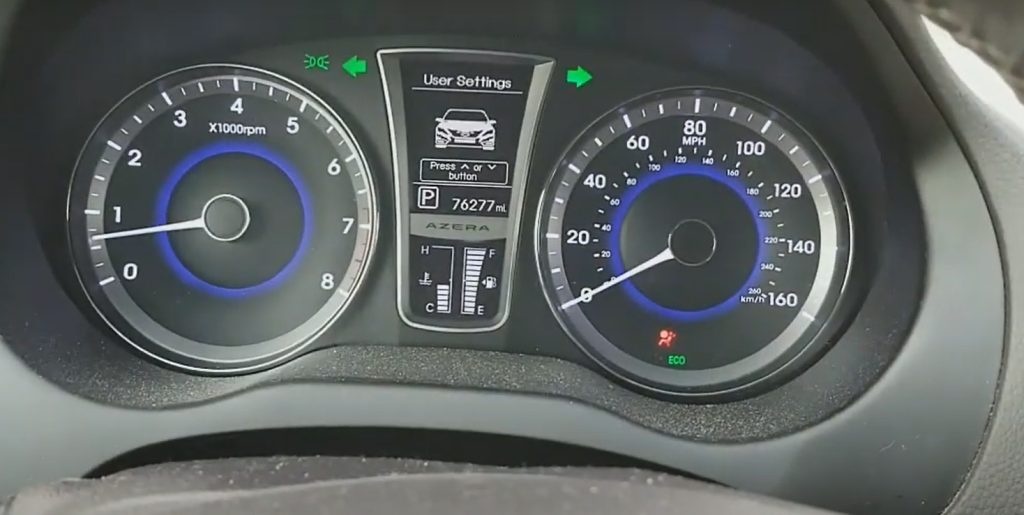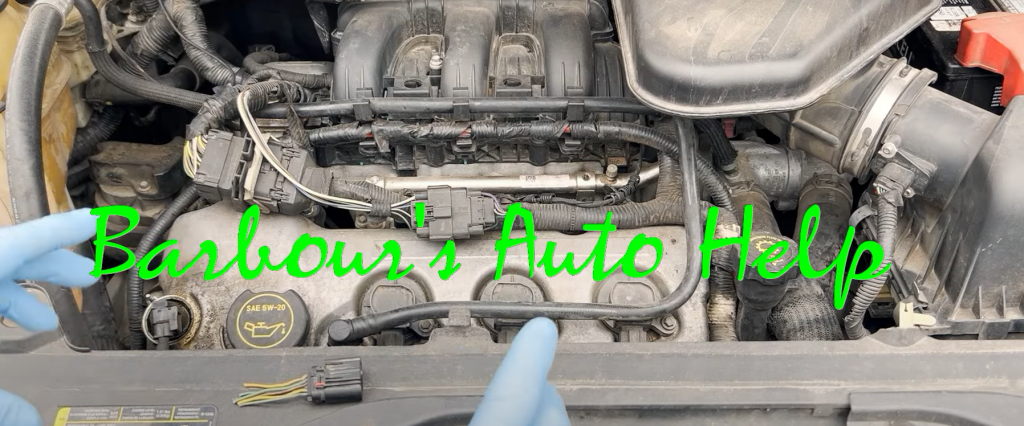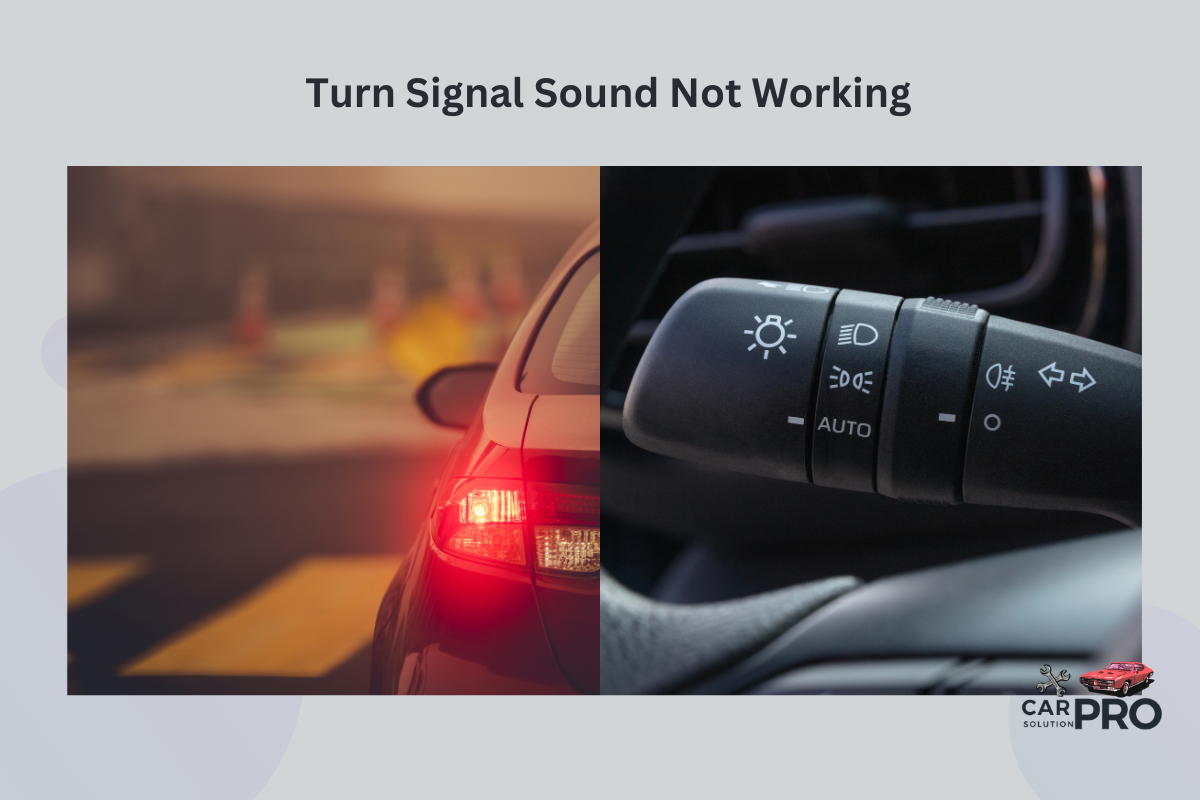Is your car’s turn signal making no sound? This common issue can be frustrating and potentially dangerous. The most likely causes are a blown fuse, faulty flasher relay, or problems with the turn signal switch. These components work together to create the familiar clicking sound when you activate your turn signals.
A silent turn signal doesn’t just remove an audible cue – it can lead to forgetting to cancel the signal after a turn. This may confuse other drivers and increase accident risk. The good news is that many turn signal sound problems can be fixed without visiting a mechanic.
Fixing this issue often involves simple steps like checking fuses or replacing the flasher relay. In some cases, the problem may be linked to the car’s audio system, especially in newer vehicles where the turn signal sound is generated through the speakers.
Key Takeaways
- Check the fuse and flasher relay first when troubleshooting silent turn signals
- A non-functioning turn signal sound can increase accident risk
- In modern vehicles, turn signal sounds may be linked to the car’s audio system
Understanding Turn Signal Systems
Turn signal systems are crucial for safe driving. They allow drivers to communicate their intentions to other road users. Let’s explore the key components and functions of these important safety features.
Components of a Turn Signal System
A typical turn signal system has several parts:
- Turn signal lever or stalk
- Flasher unit
- Fuse
- Wiring harness
- Turn signal bulbs
- Dashboard indicator lights
The turn signal lever is located near the steering wheel. It’s what drivers use to activate the signals. The flasher unit controls the blinking pattern. A fuse protects the system from electrical overloads.
Wiring connects all parts of the system. Turn signal bulbs are in the front and rear of the vehicle. Dashboard indicators show when signals are active.
How Turn Signals Function

When a driver moves the turn signal lever, it triggers the system. The flasher unit sends pulses of electricity through the wiring. This makes the bulbs blink in a regular pattern.
The electrical system powers the whole process. It supplies the energy needed for the lights to work. The flasher unit creates the clicking sound drivers hear.
Turn signals work on both sides of the vehicle. They can also function as hazard lights when needed. Modern cars often use LED bulbs for brighter, more efficient signals.
If any part of the system fails, the signals may not work properly. Regular checks can help keep turn signals functioning correctly.
Common Causes for Turn Signal Sound Failure
Turn signal sound issues can stem from several key components. Problems with bulbs, relays, or fuses often lead to silent turn signals. Let’s explore these common causes in detail.
Burnt-Out Bulbs
Burned-out bulbs are a frequent culprit behind silent turn signals. When a bulb fails, it breaks the electrical circuit, preventing the clicking sound.
Signs of burnt-out bulbs include:
- One side of turn signals not working
- Rapid blinking on dashboard
- No visible light when activated
To check for burnt-out bulbs:
- Inspect each bulb visually
- Test with a multimeter
- Replace any faulty bulbs
Replacing burnt-out bulbs is often a simple fix. It restores both the visual and audible signals, ensuring safe driving.
Faulty Relay
A faulty turn signal relay can cause the clicking sound to disappear. The relay controls the on-off cycle of turn signals.
Symptoms of a bad relay include:
- Continuous light without blinking
- No sound when activated
- All turn signals fail to work
Relay issues may also affect other car systems. Headlights or brake lights might malfunction if the relay fails completely.
To diagnose a faulty relay:
- Locate the turn signal relay
- Listen for buzzing when activated
- Check if hazard lights work
Replacing a faulty relay usually solves the sound problem. It’s a relatively inexpensive fix that improves safety.
Blown Fuses
Blown fuses can cause turn signal sounds to stop. Fuses protect the electrical system from overload.
Signs of a blown fuse:
- No power to turn signals
- Multiple electrical issues at once
- Silent operation when activated
To check for blown fuses:
- Find the fuse box
- Locate the turn signal fuse
- Look for a broken metal strip inside
Replacing a blown fuse is quick and easy. Use the correct amperage to prevent future issues. If fuses blow repeatedly, there may be a larger electrical problem to address.
Troubleshooting Steps
When your turn signal sound stops working, a few key areas need checking. These include the indicator lights, sound mechanism, and electrical connections.
Inspecting the Indicator Lights
Start by examining the turn signal lights. Turn on the ignition and activate each signal. Watch for any bulbs that don’t light up or flash irregularly.
If a bulb is out, replace it with a new one of the same type and wattage. Clean any dirty sockets with electrical contact cleaner.
Check for clogged indicators that might block the light. Remove any debris or dirt buildup.
Inspect the lenses for cracks or damage. Replace cracked lenses to prevent moisture from entering and causing further issues.
Checking the Sound Mechanism
The clicking sound comes from a relay in the fuse box. Locate this relay using your car’s manual.
With the engine off, have someone listen near the fuse box while you operate the turn signal. If there’s no click, the relay may be faulty.
Try swapping the turn signal relay with an identical one from another circuit. If the sound returns, replace the old relay.
Some cars use an electronic sound generator instead. In this case, a mechanic may need to diagnose the issue with specialized tools.
Testing Electrical Connections

Faulty wiring can cause turn signal problems. Check for loose or corroded connections at the battery, fuse box, and turn signal switch.
Inspect fuses related to the turn signals. Replace any blown fuses with ones of the same amperage.
Test the turn signal switch. If signals work with hazard lights on but not with the switch, it may need replacement.
Look for frayed or damaged wires under the steering column and in the door jambs. Repair or replace any compromised wiring.
DIY Repair Guides
Turn signal problems can often be fixed at home with some basic tools and knowledge. These guides cover common repairs to get your signals working again.
Replacing Turn Signal Bulbs
Changing a burnt-out turn signal bulb is a quick fix. First, locate the bulb behind the lens or inside the housing. Remove the old bulb by twisting it counterclockwise.
Insert the new bulb and turn clockwise to secure it. Make sure to use the correct bulb type for your vehicle. Test the new bulb before reassembling everything.
If your turn signals still don’t work after replacing bulbs, the issue may be electrical. Check the fuse box for any blown fuses related to the turn signals.
Changing the Relay or Fuse
A faulty relay or blown fuse can cause turn signal failure. Find the fuse box, usually under the dashboard or in the engine compartment. Check the diagram to locate the turn signal fuse and relay.
Remove the old fuse and replace it with a new one of the same amperage. For the relay, pull out the old unit and push in the new one. Listen for the clicking sound when you activate the turn signals.
If problems persist after replacing the relay and fuse, there may be an issue with the wiring or switch. Consider seeking professional help for more complex electrical repairs.
When to Seek Professional Help
Sometimes turn signal sound issues are too complex for DIY fixes. Professional mechanics have the tools and expertise to diagnose and repair tricky electrical problems safely and effectively.
Complex Electrical Issues
Complex wiring problems often need expert attention. If basic troubleshooting like checking fuses and bulbs doesn’t work, a pro should look at it. They can test the entire electrical system. This includes the turn signal switch, relay, and wiring harness.
Professionals use special tools to find shorts or breaks in wires. They also know how to safely take apart dashboard components. This helps them access hard-to-reach parts without causing damage.
Deeper Diagnostic Procedures
Advanced issues require specialized equipment. Mechanics use computer diagnostics to check the car’s electronic systems. This finds problems that aren’t visible.
They can also test individual components. For example, they check if the turn signal relay is working correctly. Pros have access to wiring diagrams for your specific car model. This lets them trace electrical pathways accurately.
If the problem involves the car’s computer or other high-tech systems, only trained technicians should handle it. They can reprogram or replace these sensitive parts safely.
Frequently Asked Questions
Turn signal sound issues can stem from various causes. These range from simple problems like blown fuses to more complex electrical faults. Let’s explore some common questions about this topic.
Why is there no clicking sound when I use my turn signal?
A silent turn signal often points to a faulty flasher unit. This small device creates the clicking noise and controls the blinking. If it fails, the sound stops.
Other causes may include a blown fuse or a bad relay. Checking these components is a good first step in troubleshooting.
What could cause the turn signal relay to fail?
Relays can fail due to age, electrical surges, or excessive heat. Corrosion on the relay’s contacts can also lead to failure.
Vibration from rough roads may damage the relay over time. In some cases, manufacturing defects can cause premature relay failure.
Are there common issues with the turn signal sound in certain car models?
Some car models are more prone to turn signal sound issues. For example, certain European cars may have problems with their flasher units.
Japanese cars sometimes face issues with the turn signal switch. It’s best to check model-specific forums or ask a mechanic about known issues for a particular car make and model.
Could a malfunctioning radio be linked to the turn signal sound not working?
In some cases, a faulty head unit can affect both radio and turn signal sounds. This is more common in newer cars with integrated audio and indicator systems.
If both the radio and turn signal sounds are not working, it could point to a problem with the car’s central electronic control unit.
What component is responsible for creating the sound of the turn signal?
The flasher relay is the main component responsible for the turn signal sound. It creates the clicking noise we hear when the turn signal is on.
In older cars, this was a mechanical device. Modern cars often use electronic flashers, which can still produce sound but may be quieter.
How can I troubleshoot a silent turn signal indicator?
Start by checking the fuses related to the turn signal system. Replace any blown fuses.
Next, inspect the bulbs. A burned-out bulb can cause rapid flashing or no sound.
If these steps don’t work, test the flasher relay. A faulty relay is a common cause of silent turn signals.


